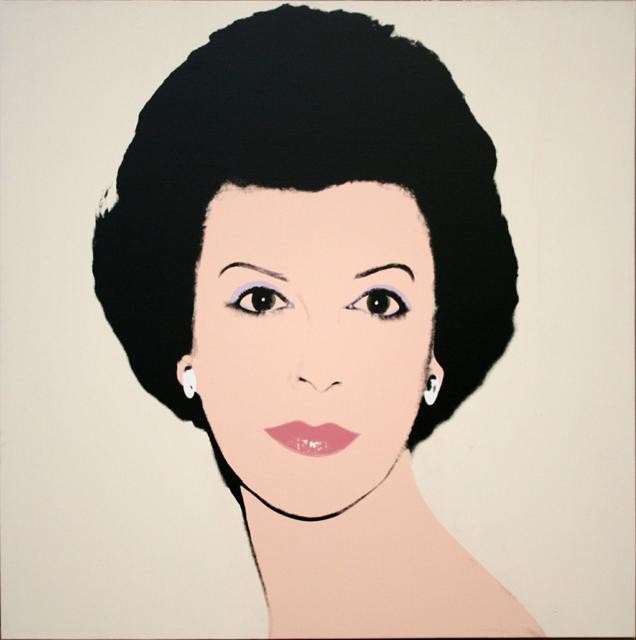Andy Warhol, Barbara Kruger, Robert Mapplethorpe, Willem de Kooning, Cy Twombly, Keith Haring, Martin Puryear, Jenny Holzer, Carl Andre and William Eggleston — it sounds like a litany from an art school student trying to impress someone at a party. It’s really a selection of works from the Emily Fisher Landau collection that has made its way to the Asheville Art Museum. Walking through the show is like walking through an art history textbook.
The exhibition spans two floors, a first for the museum. This extensive collection of contemporary American art justifies its real estate. The range of styles displayed include minimalism, postmodernism, pop, abstraction, and conceptual works, and the range of media include sculpture, paintings, prints, and photographs. It is a rare treat to have a showing of such titled artists in Asheville.
Emily Fisher Landau began collecting in the late 1960s. “I never collected something because it was fashionable,” she said. “It was always about what I liked.” This philosophy led her to collect work of young artists who would go on to gain popular acclaim. Her collecting style also brought her to develop focused patronage for select artists. One such artist is Jasper Johns. The AAM exhibit features 10 pieces by Johns. The screenprints and paintings include selections from his American flag work, some target prints and other pattern pieces.
Also on display is one of Willem de Kooning’s later pieces from 1987. De Kooning developed Alzheimer’s which can be seen visually as his work became more “pared down” in his later years, says museum curator Frank Thomson. Connected to the region, De Kooning taught at Black Mountain College in 1948 and completed a work called “Asheville,” which is part of the Phillips Collection in Washington.
The exhibition’s artwork often addresses the issues, trends and thoughts that were prevalent when the work was being created. The artists were pushing the boundaries of what art was and shining the spotlight on contemporary issues. A moving series by Glenn Ligon addresses racial profiling in the 1989 Central Park Jogger rape case. Other paintings respond to minimalism by questioning if painting itself is still relevant, such as John Baldessari’s “What This Painting Aims to Do,” where he hired a sign painter to produce a piece under his instruction. “Untitled” by Keith Haring addresses the AIDS epidemic of the ‘80s, broadcasting the words “Safe Sex.”
Landau became a trustee at the Whitney in 1989. Her art interests often paralleled the institution’s. In addition to donating this collection of artwork, she was interested in sustaining the Whitney Biennial and gave an endowment to ensure its continuation. “There’s an enormous symmetry to this gift,” said Whitney co-chairwoman Brooke Garber Neidich in The New York Times. “Emily collected artists early in their career, and the Whitney does the same thing. She was comfortable at the museum because we are a risk-taking institution. And she has always been adventurous.” According to the The New York Times, Landau’s gifted art collection was estimated to be valued between $50 million and $75 million in 2010. Of the 419 works in this extraordinary collection, more than 80 of them are on display in Asheville.
Legacy: The Emily Fisher Landau Collection will be on display through Sept. 8, and the opening reception is scheduled for Saturday, July 13, from 5-7 p.m. For more information, visit http://www.ashevilleart.org.




Before you comment
The comments section is here to provide a platform for civil dialogue on the issues we face together as a local community. Xpress is committed to offering this platform for all voices, but when the tone of the discussion gets nasty or strays off topic, we believe many people choose not to participate. Xpress editors are determined to moderate comments to ensure a constructive interchange is maintained. All comments judged not to be in keeping with the spirit of civil discourse will be removed and repeat violators will be banned. See here for our terms of service. Thank you for being part of this effort to promote respectful discussion.